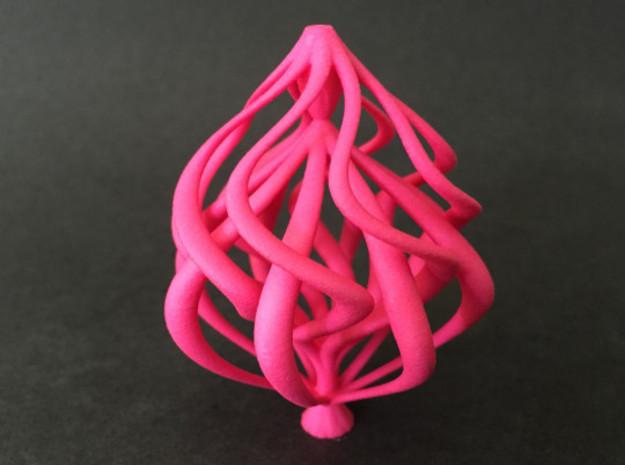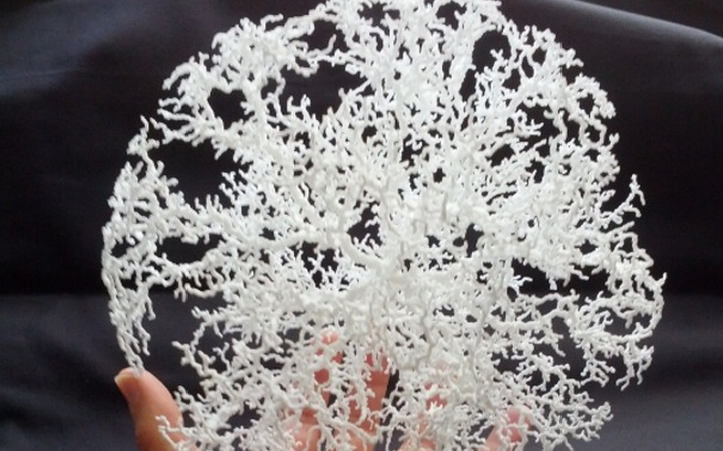 What’s the biggest reason today we are all so bent, across the globe, on putting nearly everything we can into 3D form? Because we can!
What’s the biggest reason today we are all so bent, across the globe, on putting nearly everything we can into 3D form? Because we can!
While the intent behind many 3D printing endeavors is as serious as saving a life, literally, this is a technology used for myriad and highly creative endeavors, and let’s face it–it’s just an awful lot of fun. And that’s exactly what Eric Haines, of Autodesk, and Andrew Glassner, of the Imaginary Institue, from Real-Time Rendering are counting on having this year at 2015 SIGGRAPH, the five-day interdisciplinary ‘experience,’ that certainly counts 3D printing in as one of the new technologies to be examined and highlighted.
Real-Time will be highlighting the technology in a very unique way this Sunday at ‘Making @ SIGGRAPH’ as they take 2D to a much higher plane, featuring their program that translates animation into 3D printed sculpture. This is a true workshop, entitled ‘Freezing Time,’ with seats for 65-70 participants who will each have access to high speed 3D printers so they can rock out their own 3D sculptures upon learning how to use the T2Z program.
 T2Z extracts frames from 2D animation, stacking them to make a 3D sculpture, leaving a cool design behind it in the program showing the transition. The results are pretty fascinating, and you can check out an entire gallery of their designs here.
T2Z extracts frames from 2D animation, stacking them to make a 3D sculpture, leaving a cool design behind it in the program showing the transition. The results are pretty fascinating, and you can check out an entire gallery of their designs here.
“The (self-imposed) challenge is to create an interesting, looping animation that also creates a visually-pleasing and printable sculpture,” says Haines. “If you want to hack on this code, it’s the Wobbly animation in T2Z.”
Workshop attendees will benefit from Haines’ latest foray into data translation as it pertains to T2Z. He has been using a variety of tools in experimentation, and the code is free and open source, as well as documented for a quicker, more comprehensive understanding.
Even if you can’t be at the show or the workshop, Haines encourages you to try working with this at the desktop, as well as checking out their animations and working with them.
The evolution of this program came about as Glassner was making a series of looping GIFs. At the same time last year, Haines was involved with 3D printing meetups in Boston, and one of his friends pointed out that objects could be deposited onto a large voxel grid, thus offering a “well-formed model with no geometric singularities, precision proglems, etc.”
“3D printers themselves have limits to precision, so using voxels is a good match,” said Haines.
Andrew was responsible for writing most of the code as they began experimenting, and their program came into being, with animations being used to “define voxels.” One thing led to another and Haines ended up converting data into 3D printed sculpture. The resulting program, T2Z, is much more refined and faster, and Haines points out that you can make your own animations.
“Personally, I find this whole design process entertaining,” says Haines. “In idle moments (or at the dentist) I imagine what might make both an interesting animation and a worthwhile sculpture. It’s a fun way to think about modeling and animation, and one where my intuition doesn’t always pay off. The more I play, the more I learn.”
“So download the thing, install Processing and three little libraries (easy!), and start sliding sliders, pushing buttons, and hacking code! And let us know what you find,” says Haines.
The ‘Freezing Time’ workshop will be this Sunday from 12:15-1:45 PM, at South Hall G – Studio Workstation Area.
Subscribe to Our Email Newsletter
Stay up-to-date on all the latest news from the 3D printing industry and receive information and offers from third party vendors.
You May Also Like
3D Printing Unpeeled: Wind Turbines, Probiotics and Lenses
TPI Composites, ORNL and Ingersoll Rand are working to make wind turbine tooling segments that can be 18.3 meters long. These elements also include resistive wires that help keep the...
3D Printing Unpeeled: Digital FDM Filament for Functional Gradients
Just published in Nature, a paper by a Seoul National University team looks at “3D printing with a 3D printed digital material filament for programming functional gradients.” Sang-Joon Ahn, Howon...
3D Printing Unpeeled: $5000 Cold Spray 3D Printer, Roland DGA & Living Materials
The AeroForge is a $5000 cold spray metal printer for copper made by a student team at Rice University. In a paper for ACS Central Science a team from Nanjing...
3D Printing Webinar and Event Roundup: April 28, 2024
In this week’s 3D Printing Webinar and Event Roundup, the Ceramics Expo is taking place in Michigan, Stratasys continues its advanced training courses, and SPE is holding a Polymer Characterization...
































